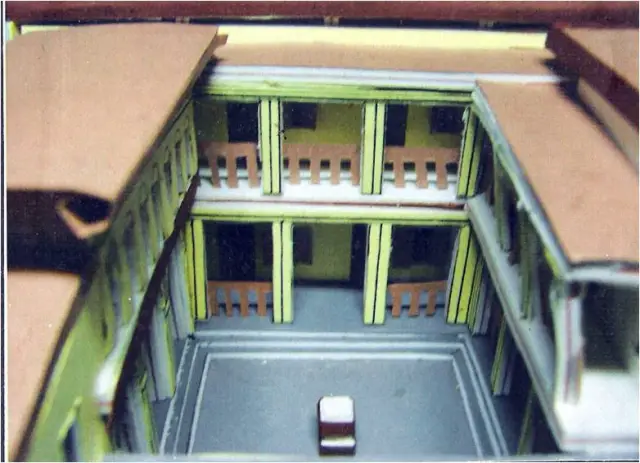
Traditional House in West Bengal (Paper Model)
ABSTRACT:
Among the few beautiful things left by colonization to us, is a mix-bred form of architecture, born off traditionalism and colonialism. The analysis of the traditional house in the purely contemporary environment, with its 19th century British décor characterized by British cornices, dual pillars etc. with some genuinely Indian thematic spaces such as the courtyard is one of the best example of what ingenuity is left which not only responded nicely to the context but also to every hook and corner of the life of people living within, ‘cause before we meet the people within, we meet their humble abode, which stands in the same authoritative mood to the context now as it did to the context it was made in.
SITE INFORMATION:
- Built by: Late Prabhat Nath Bose
- Built during late 19th century
- Place: Halisahar, West Bengal
CLIMATE:
- Hot and humid.
- Rainfall avg.1600mm
- Humidity 65-98%
- The harsh humid conditions cause stuffy conditions interiors.
RESPONSE OF BUILT ENVIRONMENT
- Resisting heat gain
- Facillitating heat loss
- Micro climatic response
SITE ANALYSIS:
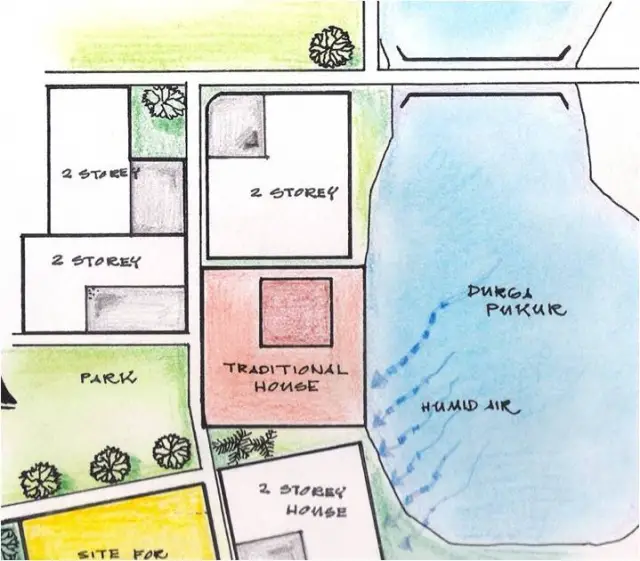
- The site is oriented in the north-east direction.
- Back side faces pond (Durgapukur).
- The house faces a public park which fulfills the greenery requirement of the locality.
- As the site plan shows, this house is the only central courtyard house in the precints.
- The house has an l-shaped layout which has been transformed into a central courtyard layout with a niched corridor and a durga puja mandap.
CLIMATIC RESPONSE:
The climate of the place is predominantly hot and humid which can generate stuffy and uncomfortable conditions. Hence it is important to generate solutions by two methods:-
RESISTING HEAT GAIN –
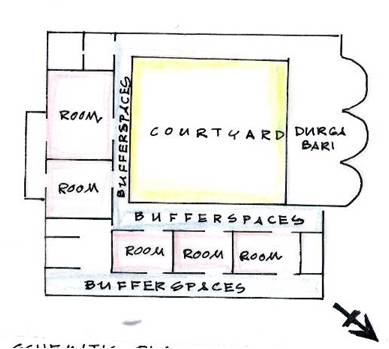
- Balconies running both around the ground and the first floor acts as buffer-spaces, which moderates the outside extremities of climate.
- The pale colouration of the walls increases surface-reflectivity and reduces input thermal coefficient.
- The orientation of the building is such that it provides shading to the internal faces of the house resulting in reduction of heat gain.
- Using bamboo chaunches under the roof, which provides excellent insulation, carries out the thermal insulation of the roof.
FACILITATING HEAT LOSS
- Ventilation is done by placing two windows and two doors in front of each other at the room level.
- As a block the cleverly placed central courtyard acting as the Air Sink distributes and ventilates air.
- To reduce the humidity is one of the key factors for generating comfort conditions.
- The humidity generated by the micro-climate of the pond is barred entry into the premises of the house by not providing any fenestration on the pond side.
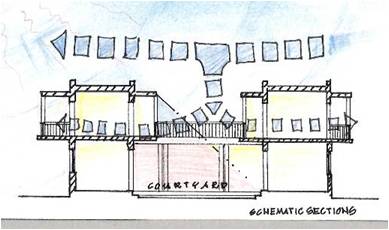
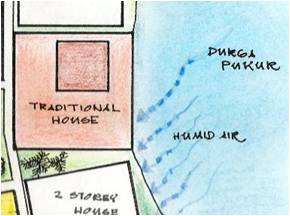
ZONING IN THE INTERIOR:
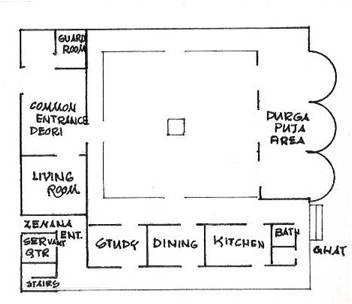
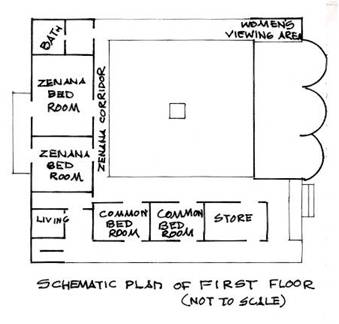
- While analyzing the house, the entrance has been deliberately divided into two from the road itself into a public and a private entrance.
- The public entrance leads to the courtyard, the public baithak and the puja area which are either public or social, then it leads to the study, the dining, and the kitchen, which are semi private.
- The other entrance leads upstairs through the staircase to the private baithak [which has a parallel conversational sitting layout],the bedrooms and the most private of them all, the zenana quarters.
- On a more vertical approach, the ground floor is a cluster of public, social and semi private spaces, whereas the first floor is totally dedicated to private spaces.
SPECIAL ISSUES:
1. DURGA PUJA MANDAP:
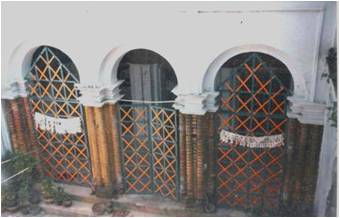
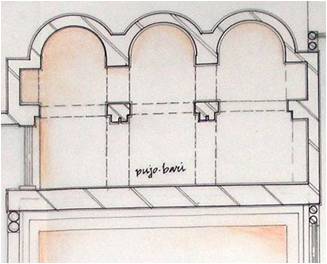
1. Actual view of mandap 2.Section cutting through Apses
- This sort of thematic space is trademark of 19th century zamindar houses of West Bengal and remains in focus for only 10 days of the year.
- The space consists of three apses, the central one for Goddess Durga and the side ones for Ganesha ,Laxmi ,Saraswati and Kartikeyah.
- The apses are fronted by three grand arches, signifying the scale of importance.
- There is also a pavilion for the women of the house to see the puja, as they were not allowed to participate in it.
2. THE HANGING BALCONY:
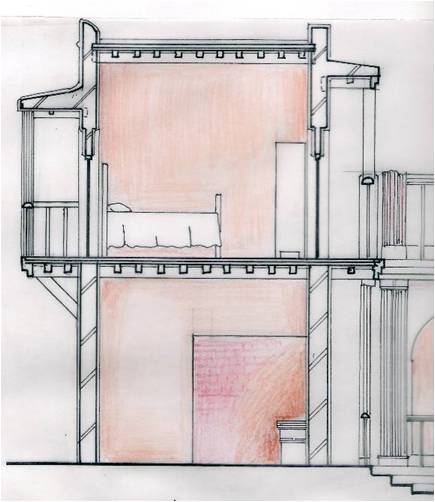
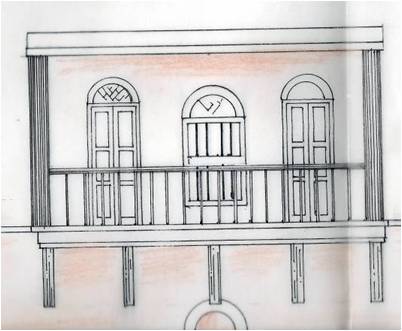
1. Section through Balcony 2. Elevation of Balcony
- This balcony on the front side is the only place from which the women of the house can see the outside.
- Supported by 5 isosceles timber trussed right angles, this may be the only structure which shows no signs of aging.
- Two brick pillars on the ends support shed on top of it.
PLANS, ELEVATIONS AND SECTIONS:
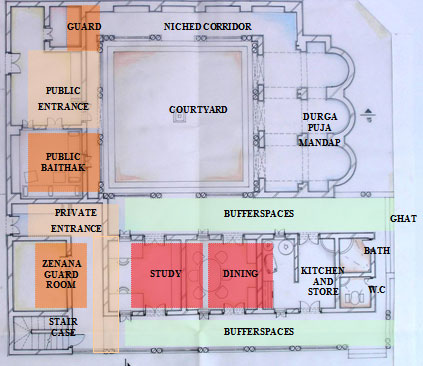
GROUND FLOOR PLAN
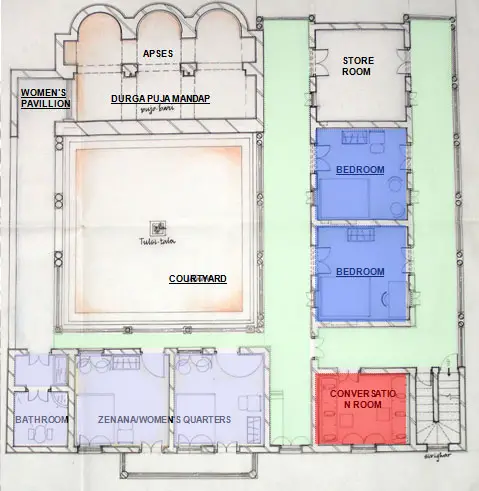
FIRST FLOOR PLAN
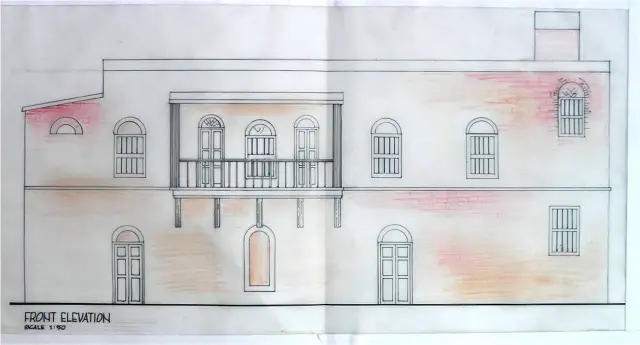
FRONT ELEVATION
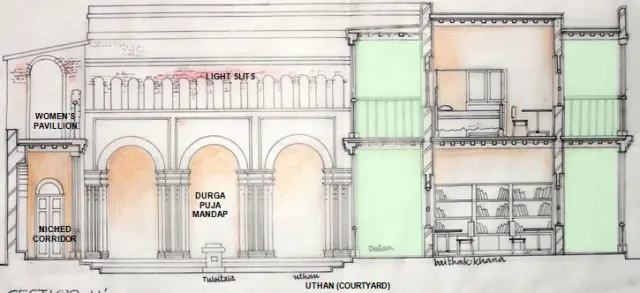
SECTION THROUGH NICHED CORRIDOR

SECTION THROUGH APSES
By: Dipanjan Das

Beautifully Described. Thanks
Beautifully Described. Thanks a lot with Regards & best wishes.